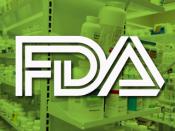Introduction
With a growing market of billions of dollars a year, diet drugs are steadily becoming a trend in America. This may be viewed as a good thing for the economy, but may not be a great thing for society. Research has been done to prove and disprove the claims made by some of these money-making companies. There are definitely boundaries, and some of the lines that have been crossed are not so thin. This paper will explain some of the pros and cons of consuming these "diet pills," giving background information as well as both practical and scientific outlooks.
Body image and perception is a main cause of the recent surge in diet drug sales. In 1980, about 45% of U.S. adults were overweight or obese. That rose to 55% in 1990 (Findlay, 2003). According to Steve Findlay, a health policy analyst in Washington, the proportion of overweight adults in America was 65% (half of whom are obese, meaning about 30 pounds or more above a healthy weight for their height).
The statistics on children are also following the rising trend. Fifteen percent of 6- to 19-year-olds-about 9 million-are overweight, which rose 10% when compared to a decade ago. The price tag is about $120 billion a year in medical expenses and lost productivity (Findlay, 2003).
More and more pre-packaged food and less and less activity could be a reason America is getting bigger. According to ObesityInAmerica.org (2007) there are some facts that should be taken into account. Obesity is the second leading cause of preventable death in the U.S. Approximately 127 million adults in the U.S. are overweight. Sixty million are obese, with a BMI greater than 30. Nine million are extremely obese, with a BMI of over 40. Currently, an estimated 65.2 percent of U.S. adults, age...


